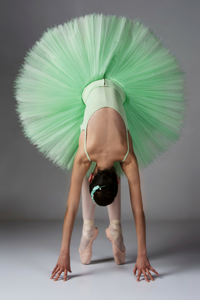 I may think the Denver Art Museum’s “Summer of Dance” is splendid, but the Denver Post’s critic disagrees. He writes, “As a theme, ‘dance’ is, frankly, thin, a fringe topic that’s wholly without risk and lacks the kind of gravitas that a serious museum has the skill and resources to tackle.” Other phrases are similarly dismissive: “escapism,” “light touch,” “fun,” and finally, in response to the display of Anna Pavlova’s tutu – “This year, its feathery fluffiness feels like a metaphor for the whole lineup at DAM.”
I may think the Denver Art Museum’s “Summer of Dance” is splendid, but the Denver Post’s critic disagrees. He writes, “As a theme, ‘dance’ is, frankly, thin, a fringe topic that’s wholly without risk and lacks the kind of gravitas that a serious museum has the skill and resources to tackle.” Other phrases are similarly dismissive: “escapism,” “light touch,” “fun,” and finally, in response to the display of Anna Pavlova’s tutu – “This year, its feathery fluffiness feels like a metaphor for the whole lineup at DAM.”
As a dancer, it is difficult for me to see this merely as a criticism of the museum’s exhibitions – it seems to be a denunciation of dance itself. In this critic’s eyes, at least, dance is ornamental, trivial, light weight — an art that lacks “gravitas.” While I may disagree, I fear this writer’s views are reflective of more general public perceptions of the nature and value of dance.
Over a hundred years ago, when the painter Rudolf Laban decided to pursue dance, he confessed that he felt he had set his heart on “the most despised profession in the world.” Dance may no longer be regarded as a profane or disreputable enterprise, but its profound value, its “gravitas,” has yet to be appreciated by art critics and the general American public.
The United States is not a dancing culture. Yes, we have popular dance, theatrical dance, even competitive dance on television. But most people do not participate in dancing on any regular basis. In my view, dance is meant to be done. Its value and meaning are only revealed through the experience of doing it. Seeing is nice, but dance should not be merely a theatrical spectacle and certainly not a competitive sport.
Until we find a way to embed dance in the lives of everyday people, dance will continue to be dissed and dismissed as a fringe topic – feathery, fluffy, fun — and largely without serious value.
